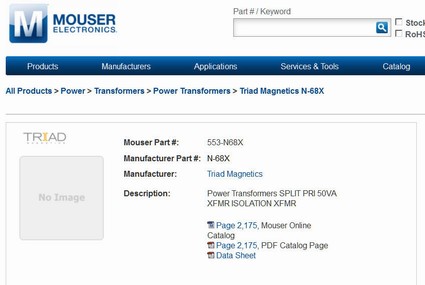[Mod's note: This thread has been pruned and edited for clarity- and closed until further notice. Steve A.]
I've read about transformerless 'widowmaker' amps before, but this is my first experience with an amp which has no power transformer. My friend who owns the amp complained of a buzz, and I said I'd take a look at it.
The amp in question is a Magnatone "Starlet" 107 (schematic below).

magnatone_107 Scarlett.pdf
My first question is about the .05/170K combo that separates the ground from earth. What does it's function? This particular model I have does not have the 170K resistor.
Before I had this amp, my friend told me that a shop added a 3-prong cord. From my research it seems like it was the wrong thing to do, and it turns out the added earth connection to the chassis via the 3rd prong was the cause of the hum.
I think I just need to add this isolation transformer and then I can add the earth connection again. Is that correct?

this isolation transformer
Is there anything else I need to do? What about the mysterious .05/170K?
I also plan on adding a fuse to the primary of the iso transformer.
Thanks for any clarification on this process.
Gaz

I've read about transformerless 'widowmaker' amps before, but this is my first experience with an amp which has no power transformer. My friend who owns the amp complained of a buzz, and I said I'd take a look at it.
The amp in question is a Magnatone "Starlet" 107 (schematic below).

magnatone_107 Scarlett.pdf
My first question is about the .05/170K combo that separates the ground from earth. What does it's function? This particular model I have does not have the 170K resistor.
Before I had this amp, my friend told me that a shop added a 3-prong cord. From my research it seems like it was the wrong thing to do, and it turns out the added earth connection to the chassis via the 3rd prong was the cause of the hum.
I think I just need to add this isolation transformer and then I can add the earth connection again. Is that correct?
this isolation transformer
Is there anything else I need to do? What about the mysterious .05/170K?
I also plan on adding a fuse to the primary of the iso transformer.
Thanks for any clarification on this process.
Gaz


 ). A 1/2 amp fuse would be good for around 60 watts, a 1/4 amp would be good for about 30. Use slow-blow fuses. If you can get them, I would try the 1/4 amp with volume at loudest setting you will be using. If it blows, try the 1/2 amp.
). A 1/2 amp fuse would be good for around 60 watts, a 1/4 amp would be good for about 30. Use slow-blow fuses. If you can get them, I would try the 1/4 amp with volume at loudest setting you will be using. If it blows, try the 1/2 amp.
Comment